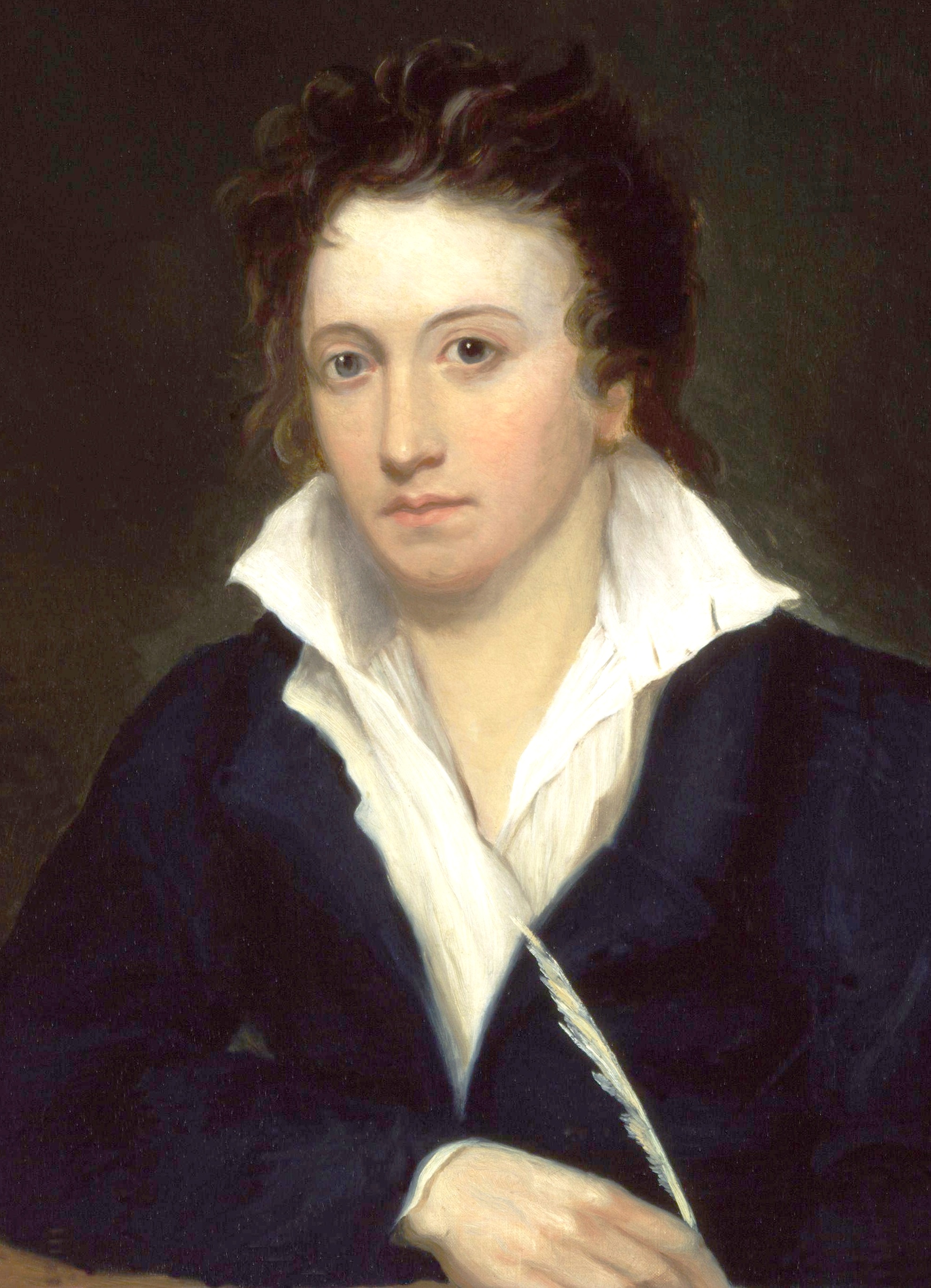The drowning of Percy Bysshe Shelley off the Italian coast two-centuries ago is still the subject of skepticism and conspiracy theories today.
Sailing novice Shelley and his two experienced shipmates “accidentally” perished at sea on July 8, 1822, when their small vessel, The Ariel, was caught in a sudden “fierce” storm and “sunk.”
At the time of his premature death, the celebrated British poet and notorious atheist was just shy of his thirtieth birthday.
His corpse washed ashore soon after the “boating accident,” having been submerged long enough that “the face and hands, and parts of the body not protected by dress, were fleshless.”
Curiously, Percy Shelley died in the exact same manner as his first wife, Harriet Westbrook, the woman whom he’d scandalously abandoned for another while she was pregnant with his child.
"No more let Life divide what Death can join together"
 On December 10, 1816, the body of Mrs. Harriet Westbrook Shelley was fished out of a chilly London waterway near Hyde Park, in an “advanced” state of decomposition and pregnancy.
On December 10, 1816, the body of Mrs. Harriet Westbrook Shelley was fished out of a chilly London waterway near Hyde Park, in an “advanced” state of decomposition and pregnancy.The drowning death of Shelley’s wife of five years was not ruled suspicious, however, since she allegedly had a history of melancholia and was particularly “despondent” in the months leading up to her “suicide.”
A few short weeks later, though, Harriet’s illustrious widower-husband married the paramour he had left her for -- the “brilliant” 16-year-old Mary Wollstonecraft Godwin, future author of the gothic-horror bestseller Frankenstein.
But the newlyweds’ bliss would also be short lived…
Shelley shipwrecked, or slain?
Despite initial reports that the deceased poet’s “unseaworthy” craft had dramatically “capsized” in the summer of 1822, searchers eventually located the sunken shipwreck upright about ten miles offshore, in the area where it was believed to have gone down.
It’s at this point in time when people started openly speculating about “foul play” as opposed to foul weather, because the hull of the boat was said to be “damaged” in such a way as would suggest it had been intentionally “rammed” by a much bigger ship.
Pirates, or worse players, who could have mistaken Shelley’s recently renamed vessel as belonging to his wealthier colleague Byron, were pinned with the blame; and many years later a deathbed confession by an Italian sailor of ill repute helped to solidify the theory.
On the other hand, disinherited Shelley was frequently in debt, and, with his flagrantly atheistic and adulterer ways, not loved and admired by all of his god-fearing countrymen. Consequently, it doesn’t seem too farfetched even these days to suspect that a public figure steeped in so much controversy was either killed by a vengeful creditor or the victim of an elaborate assassination plot.
Indeed, several years prior to dying at sea, cotenant-in-arrears Percy Shelley had skipped out of town without paying his share of overdue rent. Shelley’s abrupt departure, by the way, reportedly coincided with a “surprise attack” at the estate which he and his deadbeat housemates were letting in 1813.
Shelley’s midnight assailant that year, and the man’s motive for wanting to harm the young poet, remains a mystery to this day, but many continue to believe that the unidentified intruder was a “secret” government operative.
Percy Shelley’s Heartless Demise
Regardless of popular theories about Percy Bysshe Shelley being cruelly slain in the prime of his life and his death made to *appear* an accidental drowning, there were other theorists adamantly asserting that the 29-year-old had somehow deliberately brought about his own doom.
Some claimed a haunted Shelley was always “depressed” and finally managed to kill himself while seafaring; implying that, by 1822, those suicidal impulses were so strong he had no regard for the fate of his unwitting crew.
Others, like Mary Shelley, dismissed suicide altogether, insisting instead that The Ariel rolled over in rough waters due to "inferior" construction, and/or that the three men aboard it lacked both the “skill” and “navigational expertise” to weather a terrible storm.
According to the Shelley post-death myth, it was Mary herself who, in taking possession of her husband’s ashes following a rushed seaside cremation, made off "with his heart" as well. Purportedly after the organ was secretly removed from the funeral pyre by a grief-stricken friend of the couple.
Of course, just as in modern times, it’s critics who really excel at murder and the art of killing somebody twice -- upon learning of Percy Shelley’s tragic death off the shores of Italy, the heartless publisher of the British newspaper The Courier blared this shocking announcement:
"Shelley, the writer of some infidel poetry, has been drowned. Now he knows whether there is God or not."
Eponymous Rox
author of THE CASE OF THE DROWNING MEN

No comments:
Post a Comment